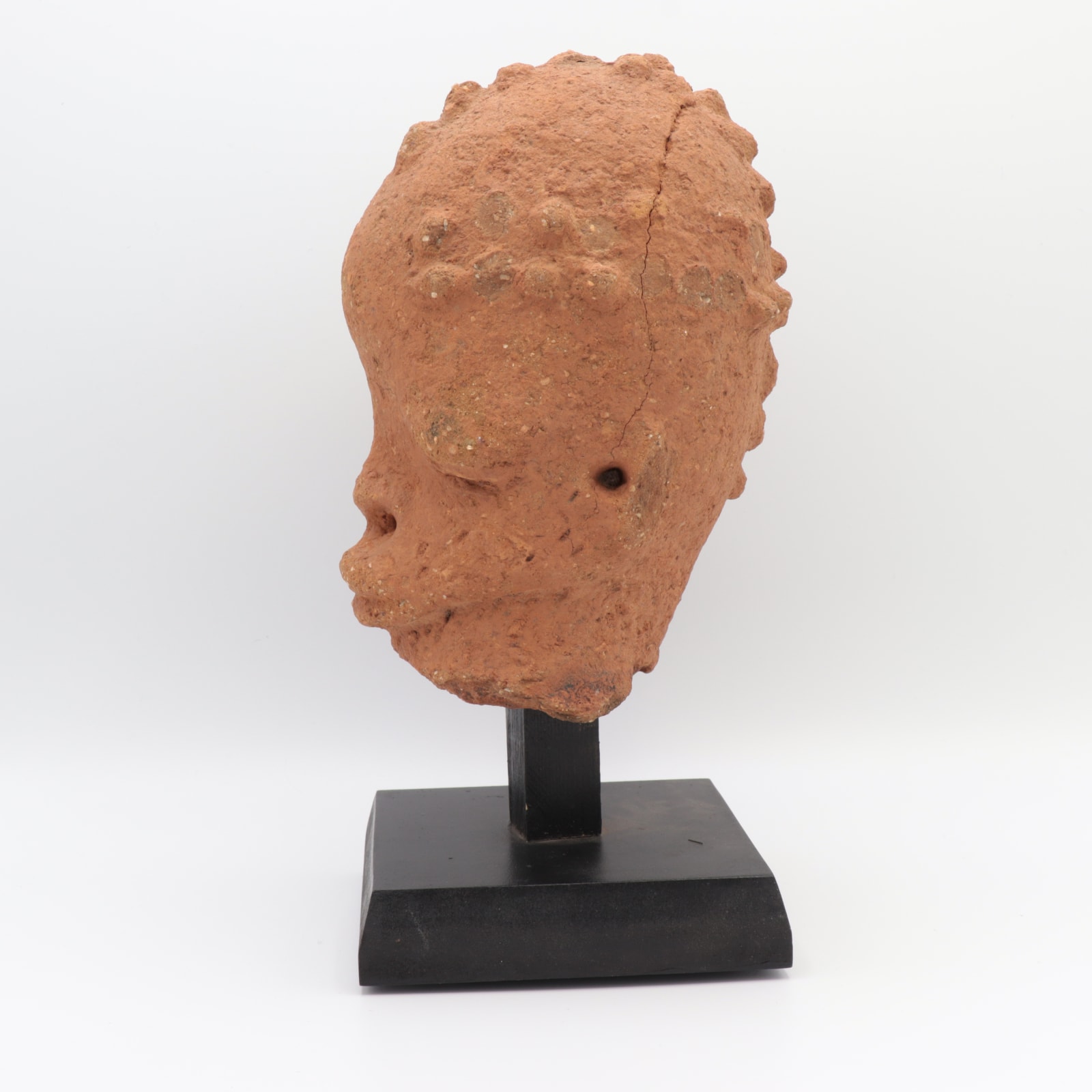Nok Female Head, 300 BC - AD 100
Earthenware
Height 19 cm
Height 7 1/2 in
Height 7 1/2 in
CB.3160
Further images
The astonishing artistry and early date of Nok pieces makes them among the most important artworks on the African continent, and they occupy a major position for analysts of African...
The astonishing artistry and early date of Nok pieces makes them among the most important artworks on the African continent, and they occupy a major position for analysts of African cultural systematic as well as in terms of their sheer aesthetic value. Currently, comparatively little is known of the Nok culture. Flourishing between 900 BC and 200 AD, the Nok “culture” is technically a misnomer, for the artistic traditions it represents are the only common characteristics shared by different Iron-Age agriculturally-based communities that differed in all other respects. Their artworks, however, constitute the most sophisticated and formalised early African artistic tradition outside Egypt. Technically, they are very unusual because of the manner in which coiled and subtractive sculpting methods were used to capture likenesses. Aesthetically, they are both naturalistic and expressionist, with highly distinctive elongated forms, triangular eyes, pierced pupils/nostrils and elaborate hairstyles.
Substyles of the Nok tradition include the Jemaa Style, the Katsina Ala Style (elongated heads) and the Sokoto Style (elongated monobrow foreheads, lending a severe expression to the face) and random variants such as the Herm Statues of Kuchamfa (simplified cylindrical figures topped with normal heads) and the “standard” three-dimensional standing figures, which subscribe to the Jemaa style. It is to the Katsina Ala group that the current piece can be attributed. The function of the art is unclear, although the care with which they are executed has led some to claim they represent nobility, or perhaps ancestors to which obeisance and sacrifices were offered.
As stated, the role of these pieces is uncertain. The largest ones are believed to have been placed in structures that had ceremonial or ritual importance at the time, thus occupying a prominent social position within the community. Smaller ones may have been personal or domestic talismans or deities/spirits. However, when it comes to the identity of the people portrayed in the art, rather more guesswork is required. Men, women and fantastical personages are all portrayed. Portraiture of important people – such as chiefs and associated figures – might be one possibility. One might also argue that strong feminine or masculine traits imply that the sculptor was emphasizing the importance of fertility or virility, and all the collateral benefits it implies (success in agriculture etc). Fantastical sculptures are likely to represent unusual characters such as spirits, mythical figures (such as non-historical ancestors) or shamans.
Substyles of the Nok tradition include the Jemaa Style, the Katsina Ala Style (elongated heads) and the Sokoto Style (elongated monobrow foreheads, lending a severe expression to the face) and random variants such as the Herm Statues of Kuchamfa (simplified cylindrical figures topped with normal heads) and the “standard” three-dimensional standing figures, which subscribe to the Jemaa style. It is to the Katsina Ala group that the current piece can be attributed. The function of the art is unclear, although the care with which they are executed has led some to claim they represent nobility, or perhaps ancestors to which obeisance and sacrifices were offered.
As stated, the role of these pieces is uncertain. The largest ones are believed to have been placed in structures that had ceremonial or ritual importance at the time, thus occupying a prominent social position within the community. Smaller ones may have been personal or domestic talismans or deities/spirits. However, when it comes to the identity of the people portrayed in the art, rather more guesswork is required. Men, women and fantastical personages are all portrayed. Portraiture of important people – such as chiefs and associated figures – might be one possibility. One might also argue that strong feminine or masculine traits imply that the sculptor was emphasizing the importance of fertility or virility, and all the collateral benefits it implies (success in agriculture etc). Fantastical sculptures are likely to represent unusual characters such as spirits, mythical figures (such as non-historical ancestors) or shamans.













